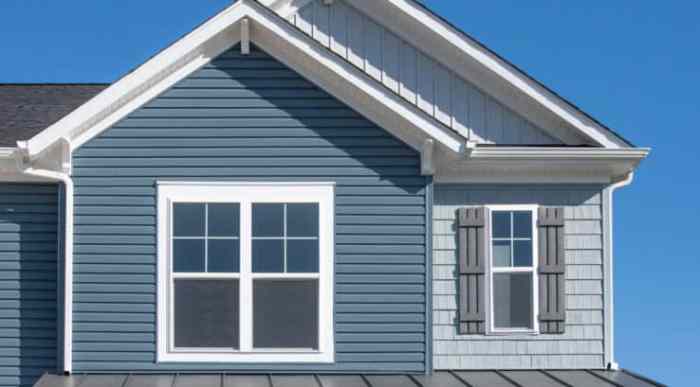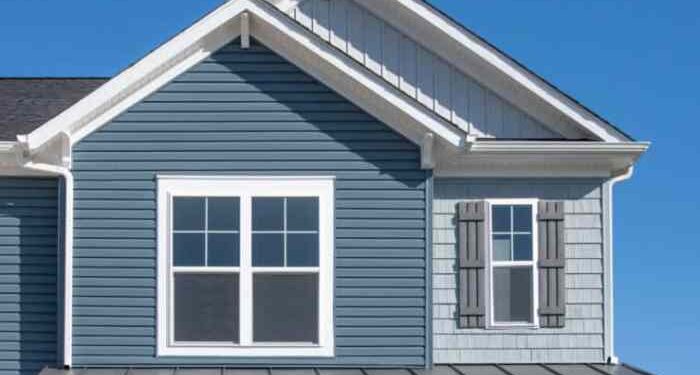Best siding for energy efficiency and insulation sets the stage for this enthralling narrative, offering readers a glimpse into a story that is rich in detail with casual formal language style and brimming with originality from the outset.
When it comes to choosing the right siding for your home, considering energy efficiency and insulation is crucial. In this guide, we will delve into the various types of siding materials, factors affecting energy efficiency, innovative technologies, and maintenance tips to help you make an informed decision for your property.
Types of Siding Materials
When it comes to choosing siding materials for energy efficiency and insulation, there are several options available to homeowners. Each type of siding material has its own unique properties that can impact the overall energy efficiency of a home.Vinyl Siding:Vinyl siding is a popular choice for homeowners due to its affordability and low maintenance requirements.
While vinyl siding itself is not a highly insulating material, it can be paired with additional insulation to improve energy efficiency. Insulated vinyl siding can help reduce heat loss in the winter and heat gain in the summer, making it a good option for homeowners looking to improve their home's energy efficiency.Wood Siding:Wood siding is a natural insulator and can help regulate the temperature inside a home.
It has excellent thermal properties that can help keep a home warm in the winter and cool in the summer. However, wood siding requires regular maintenance to prevent rot and decay, which can impact its energy efficiency over time.Fiber Cement Siding:Fiber cement siding is a durable and low-maintenance option that offers good insulation properties.
It is resistant to fire, insects, and rot, making it a long-lasting option for homeowners. Fiber cement siding can help improve energy efficiency by reducing heat transfer through the walls of a home.Metal Siding:Metal siding is known for its durability and longevity.
While metal siding itself is not a highly insulating material, it can be paired with insulation to improve energy efficiency. Metal siding reflects solar heat, making it a good option for homeowners in hot climates looking to reduce cooling costs.Overall, each type of siding material has its own pros and cons when it comes to energy efficiency and insulation.
Homeowners should consider their climate, budget, and maintenance preferences when choosing the best siding material for their home.
Factors affecting energy efficiency

When it comes to energy efficiency in a home, the choice of siding material plays a crucial role. Factors such as color, thickness, and proper installation can significantly impact how well a home retains heat in the winter and stays cool in the summer.
Color of Siding
The color of siding can have a direct impact on energy efficiency. Darker colors tend to absorb more heat from the sun, which can increase the temperature inside the house. On the other hand, lighter colors reflect more sunlight, helping to keep the interior cooler.
Choosing a lighter color for your siding can help reduce the need for excessive air conditioning during hot weather.
Thickness of Siding Material
The thickness of the siding material can also affect the insulation properties of your home. Thicker siding provides better insulation against heat transfer, helping to maintain a more consistent indoor temperature. Thicker siding materials, such as insulated vinyl or fiber cement, can help reduce energy consumption by keeping your home comfortable without overworking your heating or cooling systems.
Proper Installation
Proper installation of siding is crucial for maximizing energy efficiency. Gaps or poorly sealed seams can allow drafts to enter your home, reducing the effectiveness of your insulation. Ensuring that your siding is installed correctly by a professional can help prevent air leakage and improve the overall energy efficiency of your home.
Innovative siding technologies
Innovative siding technologies play a crucial role in enhancing energy efficiency in homes. These advancements focus on improving insulation and reducing heat transfer, ultimately leading to lower energy consumption and cost savings.
Insulated Siding Panels
Insulated siding panels are designed with a layer of foam insulation attached to the back of the siding material. This added insulation helps to reduce thermal bridging, which is the transfer of heat through the wall studs. By minimizing heat loss and maintaining a consistent indoor temperature, insulated siding panels contribute significantly to the overall energy efficiency of a home.
Reflective Coatings
Reflective coatings are another innovative technology used in siding to improve energy efficiency. These coatings are applied to the surface of the siding material and have the ability to reflect a portion of the solar radiation away from the house.
By reducing the amount of heat absorbed by the siding, reflective coatings help to keep the interior of the home cooler in the summer, reducing the need for air conditioning and lowering energy costs.
Maintenance and longevity
Proper maintenance is crucial for ensuring the optimal energy efficiency and longevity of your siding. By following some simple tips, you can maximize the insulation properties of your siding, leading to a more energy-efficient home.
Maintenance Tips for Energy Efficiency
- Regularly clean your siding to remove dirt, debris, and mold that can affect its performance.
- Inspect for any damage or signs of wear and tear, such as cracks or holes, and repair them promptly.
- Consider applying a fresh coat of paint or sealant to protect your siding from the elements and maintain its insulating properties.
- Trim any vegetation near your siding to prevent moisture buildup and potential damage.
Longevity of Siding Materials and Impact on Insulation
- Vinyl siding is known for its durability and low maintenance, with a lifespan of 20-40 years depending on the quality.
- Fiber cement siding has a longer lifespan of 30-50 years and provides excellent insulation throughout its lifetime.
- Wood siding, while aesthetically pleasing, requires more maintenance and has a lifespan of 20-30 years if properly cared for.
- Metal siding is highly durable and can last 40-60 years, offering good insulation properties over time.
Impact of Weather Conditions on Energy Efficiency
- Extreme weather conditions such as heavy rain, snow, or intense heat can impact the performance of your siding and reduce its energy efficiency.
- Properly maintained siding can withstand harsh weather conditions better and maintain its insulating properties for longer.
- Regular inspections and maintenance after severe weather events can help identify any damage and prevent further issues.
Conclusion
In conclusion, selecting the best siding for energy efficiency and insulation is a key investment for any homeowner looking to enhance the comfort and sustainability of their living space. By understanding the different materials, technologies, and maintenance practices, you can ensure that your home remains energy-efficient and well-insulated for years to come.
FAQ Insights
What is the most energy-efficient siding material?
Fiber cement siding is known for its excellent insulation properties and energy efficiency, making it a top choice for homeowners looking to enhance the thermal performance of their homes.
How does siding color impact energy efficiency?
Lighter-colored sidings reflect more sunlight, reducing heat absorption and keeping the interior cooler, thus improving energy efficiency.
Are there any eco-friendly siding options for energy efficiency?
Yes, materials like recycled wood or engineered wood sidings offer eco-friendly options that provide good insulation and energy efficiency benefits.
Can I install insulated siding panels myself?
While it's possible, it's recommended to hire a professional to ensure proper installation and maximize the insulation benefits of these panels.



